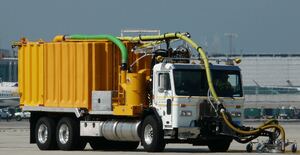Rumble Strips: Enhancing Road Safety One Groove at a Time
Corps
Rumble strips are a vital component of modern road safety infrastructure. Known for their characteristic vibration and audible noise, rumble strips serve as an early warning system for drivers veering off course or approaching dangerous zones. Despite being simple in design, their impact on accident prevention is significant. This article explores the function, installation, and safety benefits of rumble strips while emphasizing their importance in reducing roadway fatalities.
What Are Rumble Strips?
Rumble strips are patterns of raised or grooved materials applied across or along a roadway surface. Their main purpose is to alert inattentive or drowsy drivers through noise and vibration, signaling the need for immediate corrective action. Rumble strips are commonly installed on the shoulders of highways, centerlines of rural roads, or at intersections prone to collisions.
These safety features are passive systems—requiring no electricity or sensors—making them both cost-effective and sustainable. When a vehicle tire rolls over rumble strips, the resulting sensation grabs the driver’s attention, often just in time to prevent accidents.
Types of Rumble Strips
There are three primary types of rumble strips, each with a specific application and safety goal:
Shoulder Rumble Strips
Shoulder rumble strips are placed on the edge of the roadway to prevent run-off-road accidents. These are especially critical on rural highways where nighttime visibility is limited, and driver fatigue is more prevalent.
Centerline Rumble Strips
Centerline rumble strips are installed along the center of undivided roads. They significantly reduce head-on collisions and sideswipes by alerting drivers who drift across the centerline.
Transverse Rumble Strips
Transverse rumble strips are placed perpendicular to the direction of travel, typically before intersections or toll booths. Their main function is to reduce vehicle speeds in advance of stopping points or hazards.
The Science Behind Rumble Strips
The success of rumble strips lies in human perception. The noise and vibration produced stimulate the driver's auditory and tactile senses. Research has shown that even momentarily distracted drivers can quickly refocus when alerted by rumble strips.
The ideal dimensions, spacing, and depth of rumble strips are standardized to maximize their effectiveness without causing discomfort or control issues for vehicles.
Safety Benefits of Rumble Strips
Statistical analysis reveals that rumble strips reduce single-vehicle run-off-road crashes by up to 80% in some regions. Moreover, roads with centerline rumble strips have shown a significant drop in head-on collisions.
Beyond direct safety, rumble strips also benefit:
- Emergency responders by lowering the frequency of preventable accidents
- Road maintenance budgets through reduced crash-related damage
- Traffic flow efficiency by minimizing accidents that block lanes
Installation Considerations
Installing rumble strips requires a thoughtful approach. Road width, pavement condition, traffic volume, and bicycle traffic must all be evaluated. On roads with heavy cyclist activity, centerline rumble strips may be preferable over shoulder installations to maintain a safe riding space.
Seasonal weather changes and pavement durability are also crucial factors. Improper installation can lead to pavement degradation, leading to higher maintenance costs over time.
Environmental and Community Concerns
Though rumble strips are proven to be safety tools, they are not without opposition. Noise complaints from nearby residents are common, especially on rural roads. Balancing safety with community impact involves strategic placement and consultation with stakeholders.
Advanced designs, such as sinusoidal rumble strips, have been developed to reduce external noise while maintaining in-vehicle alertness. These innovations offer a compromise between effectiveness and community well-being.
Conclusion
Rumble strips are one of the simplest yet most effective tools for reducing road fatalities and enhancing driver awareness. Their widespread application across highways and rural roads speaks to their unmatched value in accident prevention. As transportation infrastructure continues to evolve, rumble strips will remain a cornerstone of roadway safety—saving lives through every groove and vibration.







commentaires